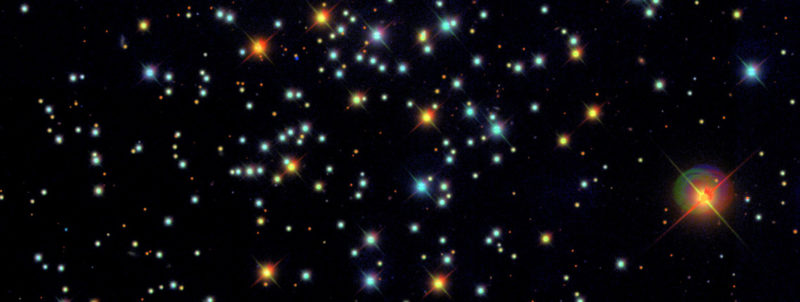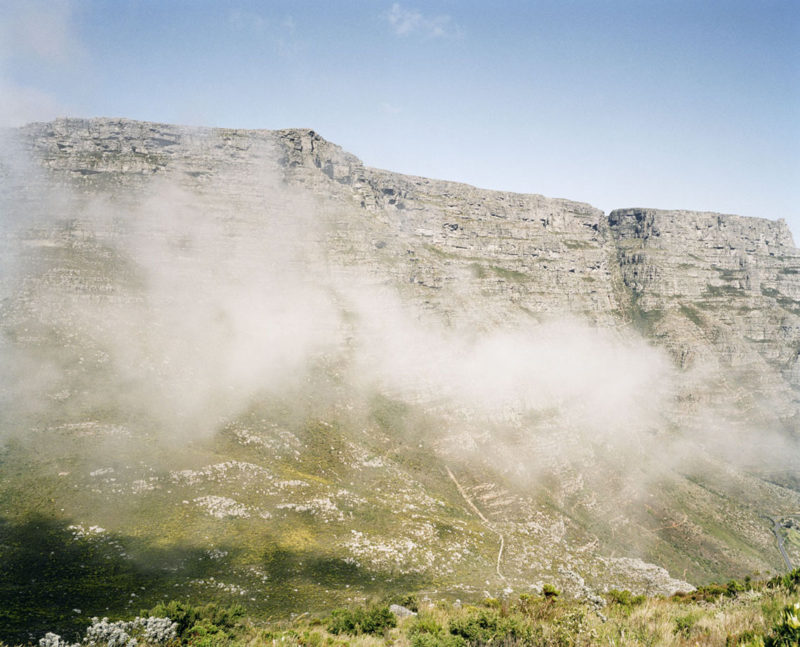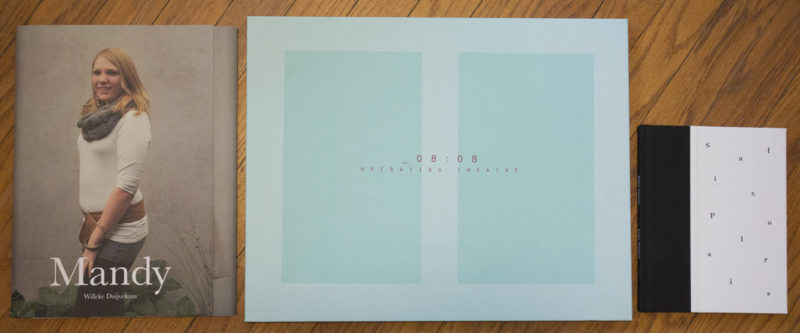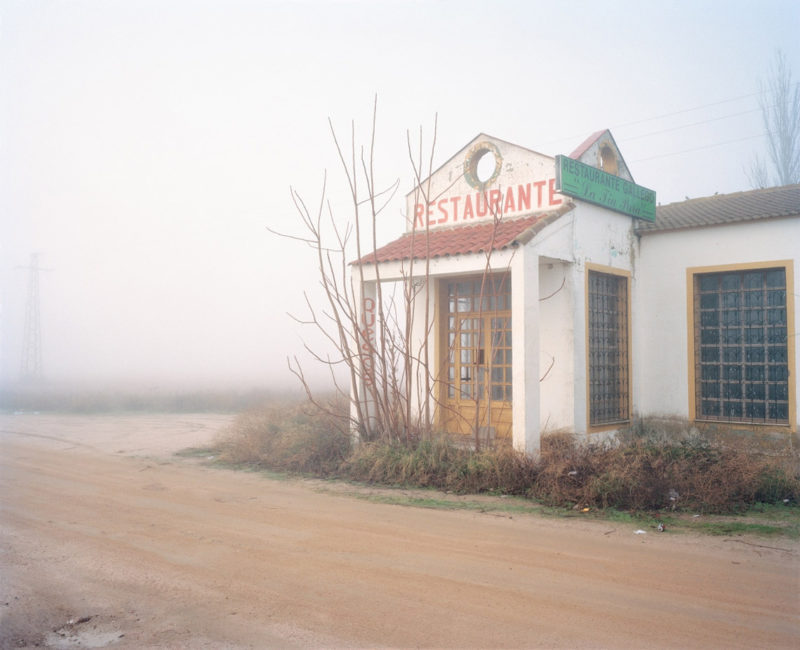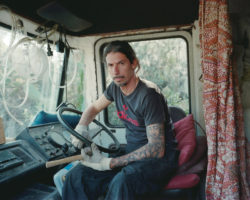A recent exhibition at the International Center of Photography entitled What is a Photograph? “explores the intense creative experimentation in photography that has occurred since the 1970s” (quoted from the exhibition’s web site). When I saw the title I thought that the medium indeed deserved a discussion of what actually constituted a photograph. The list of the work included, however, convinced me quickly that this particular exhibition deftly avoids dealing with what it is that right now, in 2014, makes this very question relevant. Instead, the show looks like an updated rehash of an earlier and now rather dated-looking version.
Let’s state the obvious: In a day and age where the majority of photographs exist in ephemeral form, tying an inquiry into what a photograph actually is to experimentation by very art-world centered humans around materials simply misses most of the excitement. I’m writing this article on a computer, whose screen has displayed thousands and thousands of photographs, however briefly. There are thousands of photographs stored in my computer’s memory somewhere (plus on external hard disks). These photographs were created in all kinds of ways, and they have undergone all kinds of transformations. Right now, I can’t see a single one. But I could make each and every one re-appear in very little time, creating yet another ephemeral version.
Photographs, in other words, aren’t tied to materials any longer. What is more, experimentation around photography has moved much beyond experimenting with materials. Photographs, in essence, aren’t even objects any longer. All those photographs on, say, Facebook or Instagram, billions and billions of them, they exist in a way that decades ago would have been unthinkable. To use an example from the art world, Thomas Ruff‘s computer-generated photograms have vastly expanded our thinking about this previously so particular way to make lens-less pictures. Now, they exist inside the memory bank’s of computers before they’re committed to paper.
Ruff’s work, as it turns out, points at something else. Over the course of the past few weeks, Trevor Paglen has been writing about photography at the Fotomuseum Winterthur‘s blog, Still Searching. Starting out with the question Is Photography Over?, Paglen wrote that “traditional approaches to doing-photography and thinking-about-photography feel increasingly anachronistic.” A section a little further is worthwhile quoting:
“The landscape of traditional photography theory and criticism is in a similarly contorted shape. On one hand, the digital revolution and landscape of ubiquitous image-making has created a situation where curators and critics specializing in photography have to define the field exceedingly narrowly in order to have an ‘object’ of discourse at all. […] As a consequence of narrowing the objects of inquiry so dramatically, the critical discussion around photography ends up inevitably admitting only a very small range of photographic practices into its purview. Consequently, critical discussions take shape around a small range of photographic images and practices which are extreme exceptions to the rule. Photography theory and criticism has less and less to do with the way photography is actually practiced by most people […] most of the time.”
To move beyond these narrow ways to treat photography, Paglen then introduced the concept of Seeing Machines (part 3 of his writing deals with Scripts). It’s unlikely to surprise anyone who has been following my writing that I’m in full agreement with Paglen regarding his assessment of photography theory and criticism. Where it gets interesting is the idea of what he calls “seeing machines.”
Coming back to Thomas Ruff, this particular artist has already been working with what I want to call robotic image taking for a while. Ruff’s ma.r.s. uses images created by a machine orbiting our neighbouring planet of Mars as starting points, transforming them – again relying on computer technology – into completely artificial landscapes, landscapes that, however, are really not more artificial than any of the images professional astronomers produce on a regular basis.
The field of astronomy relies on robotic image taking, in part because it’s not feasible or simply impossible to send humans far into outer space to take pictures. Voyager 1, a satellite carrying a camera and an assortment of other scientific objects (most of them shut down to preserve power), has now left the solar system. Much closer to home, robotic cameras are all around us, in the form of surveillance cameras etc.
But are the images made by those robotic cameras photographs? What is a photograph?
I want to suggest that the minimum requirement for a photograph is authorship. Authorship in the form of intent, however specific or not specific it might be. Intent requires consciousness, and machines or robots don’t have consciousness. At least not yet. To robotically photograph the whole sky every night, to continuously film some spot on the street – that’s not really photography, provided you want to accept this requirement. You could, of course, widen what you see as photography to include anything remotely connected to image taking, but I don’t think adding this particular restriction isn’t such a big deal. Or actually it is a big deal: It defines photography in a very specific sense. What it leaves out essentially is white noise in the form of images that, in all likelihood, nobody – no human, no machine – has ever looked at.
In other words, while I don’t dismiss any of the images generated by robotic cameras, they’re not photographs until authorship is introduced. Seen that way, a script – as discussed in Paglen’s third article – introduces a form of authorship, but it’s not the machine’s. It’s the programmer’s. We’re back to humans.
This connects why the question “what is a photograph?” matters with the idea of beauty. Robots or machines have no concept of beauty (again, not yet). They can’t make photographs because they are unable to make decisions entirely based on their own whims (instead of relying on scripts or algorithms programmed into the memory banks), and they’re unable to make photographs because they have no concept of beauty. All they can do – right now – is to robotically record parts of the world so that humans, at whatever stage, assign value and sense to the resulting images.
Imagining robots with consciousness we’d be in a Philip K Dickian world. What would their photographs look like? If conscious robots were modeled perfectly after humans we could surmise that the photographs might look like our own (photographs of robot food, being at work, giving the robot equivalent of a victory hand sign while on a break etc.). But we don’t know whether robots perfectly modeled after us would exactly be like us. Do Androids Dream of Electric Sheep? Will they really want to be just like us? And what will their photographs look like?
These kinds of questions right now seem pretty far from where we are. They’re certainly very far from where photography is right now. But I think photography today is already closer to these questions than to an exhibition like What is a Photograph? We have so much to gain from looking at how much photography has changed and where it could possibly go.
I’ve argued before that photography really is more a practice than anything, the consequence being that photographs not only have become ephemeral, they often don’t matter any longer. Because of the practice aspect, however (“I photograph, therefore I am”), photographs are intimately tied to authorship: photographs are essentially re-confirming their maker’s (author’s) presence, one picture at a time. Or more accurately, the existence of a photograph provides proof that someone felt the need to re-confirm her or his presence.
While photography has always been tied to this idea, over the past decade this has become its dominant mode, resulting in billions and billions of photographs, a mass of images badly misunderstood by most theorists (and, sadly, many of the medium’s practitioners). In part, photographs have become what makes us human. We’ll see how this all will play out once we have the first robots with consciousness…
